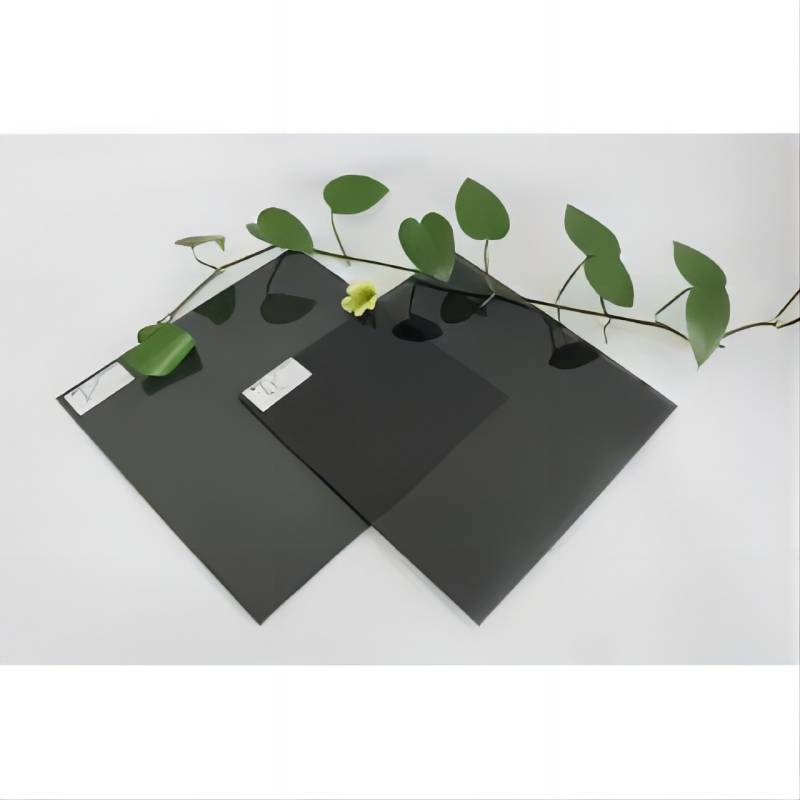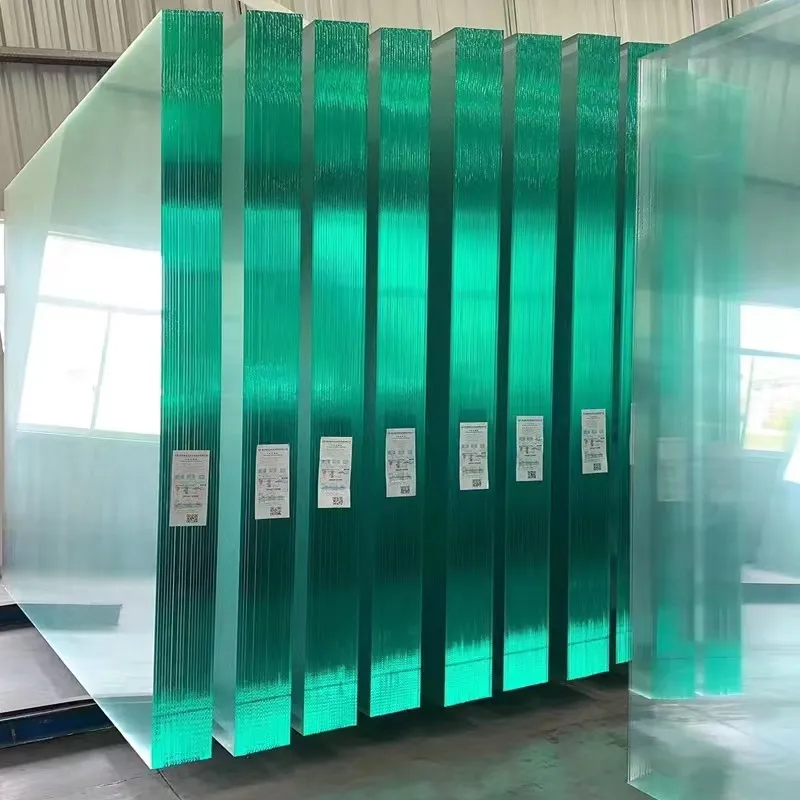In the realm of modern architecture, the selection of glass plays a crucial role in defining the aesthetic and functional characteristics of a structure. Glass is an extraordinarily versatile material that architects and designers have embraced to create innovative and sustainable buildings. Understanding the different types of glass used in architectural applications can enhance both the comfort and energy efficiency of a building, while also contributing to its visual appeal and environmental impact.

Consider the use of annealed glass, often seen as the base form of glass. It is created by slowly cooling molten glass to relieve internal stresses. Annealed glass is clear, cost-effective, and easy to cut for windows and other applications. However, it poses safety challenges, as it can shatter into sharp fragments upon impact, which is why it's commonly employed in applications where there's little risk of human contact or in combination with other materials.
In response to safety concerns,
tempered glass has become a staple in architectural design. This type of glass undergoes a rapid heating and cooling process to increase its strength by approximately four to five times over annealed glass. When broken, it crumbles into small, blunt pieces that reduce the risk of injury, making it ideal for use in areas with high human activity, such as building facades, shower doors, and glass doors.

Laminated glass is another popular choice, which consists of two or more glass layers bonded with an interlayer, usually polyvinyl butyral (PVB). This construction allows it to stay intact even when shattered, providing excellent safety and security. Its sound insulation capabilities also make it favored in urban environments to mitigate noise pollution. Furthermore, laminated glass can be enhanced with various coatings for UV protection and energy efficiency, contributing to the sustainability of a building.
For projects where insulation is paramount, insulated glass units (IGUs) come into play. These units incorporate multiple glass layers separated by a spacer, allowing for argon or krypton gas filling to improve thermal performance. This design significantly reduces heat transfer, keeping indoor environments comfortable and energy costs down. IGUs are the go-to solution for architects looking to achieve high-performance building envelopes, especially in climates with extreme temperatures.
Aesthetic appeal and performance merge seamlessly with the use of low-emissivity (low-E) glass. Coated with a microscopically thin, transparent layer of metal or metallic oxide, low-E glass reflects infrared energy while allowing visible light to pass through. It prevents heat loss during winter and heat gain during summer, greatly enhancing energy efficiency without sacrificing natural light. This glass type is indispensable in green building designs aiming to achieve LEED certification or similar sustainability benchmarks.
types of glass used in architecture
Spandrel glass serves a unique architectural function by offering opaque glazing solutions for covering building features such as columns, floors, and HVAC components, maintaining a consistent facade appearance. It's painted or coated to match or contrast with the transparent glazing used elsewhere, providing an aesthetic continuity while hiding unsightly structural or mechanical elements.
For an even more dynamic design, switchable glass, a smart glass technology, allows the transition from transparent to opaque states under electrical stimulus. This adaptability supports privacy, light control, and energy management within spaces like conference rooms and bathrooms, showcasing technological advancement in architectural applications.
Decorative glass, though sometimes overlooked in terms of functionality, can also significantly impact the ambiance and identity of a space. With techniques such as etching, sandblasting, and screen printing, glass can be transformed into intricate designs and patterns, allowing architects to tailor spaces to particular cultural or aesthetic narratives. This offers an avenue for personal expression within public and private spaces alike.
The recent advancement in photovoltaic glass integrates solar technology into building design, offering energy generation capabilities alongside traditional glazing functions. This form of glass is embedded with solar cells that convert sunlight into electricity, promoting energy independence and sustainability.
In conclusion, selecting the right type of glass is essential not only to meet safety and efficiency standards but also to fulfill the creative vision of a building. Architects who prioritize the strategic use of various glass types can deliver innovative structures that resonate with both the functional and aesthetic desires of today's society, simultaneously addressing sustainability goals. These decisions have lasting impacts, underscoring the importance of expertise and trustworthiness in architectural material selection.
 Afrikaans
Afrikaans  Albanian
Albanian  Amharic
Amharic  Arabic
Arabic  Armenian
Armenian  Azerbaijani
Azerbaijani  Basque
Basque  Belarusian
Belarusian  Bengali
Bengali  Bosnian
Bosnian  Bulgarian
Bulgarian  Catalan
Catalan  Cebuano
Cebuano  Corsican
Corsican  Croatian
Croatian  Czech
Czech  Danish
Danish  Dutch
Dutch  English
English  Esperanto
Esperanto  Estonian
Estonian  Finnish
Finnish  French
French  Frisian
Frisian  Galician
Galician  Georgian
Georgian  German
German  Greek
Greek  Gujarati
Gujarati  Haitian Creole
Haitian Creole  hausa
hausa  hawaiian
hawaiian  Hebrew
Hebrew  Hindi
Hindi  Miao
Miao  Hungarian
Hungarian  Icelandic
Icelandic  igbo
igbo  Indonesian
Indonesian  irish
irish  Italian
Italian  Japanese
Japanese  Javanese
Javanese  Kannada
Kannada  kazakh
kazakh  Khmer
Khmer  Rwandese
Rwandese  Korean
Korean  Kurdish
Kurdish  Kyrgyz
Kyrgyz  Lao
Lao  Latin
Latin  Latvian
Latvian  Lithuanian
Lithuanian  Luxembourgish
Luxembourgish  Macedonian
Macedonian  Malgashi
Malgashi  Malay
Malay  Malayalam
Malayalam  Maltese
Maltese  Maori
Maori  Marathi
Marathi  Mongolian
Mongolian  Myanmar
Myanmar  Nepali
Nepali  Norwegian
Norwegian  Norwegian
Norwegian  Occitan
Occitan  Pashto
Pashto  Persian
Persian  Polish
Polish  Portuguese
Portuguese  Punjabi
Punjabi  Romanian
Romanian  Russian
Russian  Samoan
Samoan  Scottish Gaelic
Scottish Gaelic  Serbian
Serbian  Sesotho
Sesotho  Shona
Shona  Sindhi
Sindhi  Sinhala
Sinhala  Slovak
Slovak  Slovenian
Slovenian  Somali
Somali  Spanish
Spanish  Sundanese
Sundanese  Swahili
Swahili  Swedish
Swedish  Tagalog
Tagalog  Tajik
Tajik  Tamil
Tamil  Tatar
Tatar  Telugu
Telugu  Thai
Thai  Turkish
Turkish  Turkmen
Turkmen  Ukrainian
Ukrainian  Urdu
Urdu  Uighur
Uighur  Uzbek
Uzbek  Vietnamese
Vietnamese  Welsh
Welsh  Bantu
Bantu  Yiddish
Yiddish  Yoruba
Yoruba  Zulu
Zulu 


